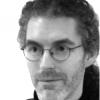The Strategies for Engineered Negligible Senescence (SENS) was the original attempt to produce a list of important mechanisms in aging, created in an era in which the aging research community leadership was actively hostile towards the concept of treating aging as a medical condition. A great deal of patient advocacy and hard work was required to create the much more receptive research community that exists today, in which the treatment of aging is accepted as a legitimate goal, and the inflamed discussion has moved on to how exactly one should go about it. In this more receptive environment, SENS was followed by other lists of mechanisms: the Hallmarks of Aging, echoing the much earlier Hallmarks of Cancer, and the Seven Pillars of Aging.
To my eyes the important difference between SENS and the hallmarks of aging is that SENS was framed as a call to action from the very start. It attempts to list the root causes of aging, conceptualizing aging as an accumulation of specific well-established forms of cell and tissue damage, points at which intervention will plausibly produce rejuvenation - and rejuvenation is the goal, the point of the exercise, to eliminate age-related suffering and death. The hallmarks of aging is just a list, attempting to be scientifically neutral. One can use both as starting points for directions in research and development of means to treat aging, but SENS was from the beginning intended to be used that way, and its creation was biased towards achieving the greatest expectation of extended healthy life span given viable therapies.
SENS vs. the hallmarks of aging: competing visions, shared challenges
In response to the complexity of aging, a range of pluralistic frameworks have emerged to address its challenges. Two particularly relevant proposals in this regard are Strategies for Engineered Negligible Senescence (SENS), which advocates repairing accumulated damage in the body to reverse its effects, and the Hallmarks of Aging (HoA), which identifies and classifies the key biological processes driving age-related decline. Given their prominent roles, both SENS and the HoA are the subject of ongoing debate and scrutiny. SENS has been criticized regarding the burden of proof, an epistemological principle stipulating that those who propose a novel hypothesis must provide robust evidence to substantiate it. The HoA has also faced considerable criticism, particularly for lacking a clear framework to prioritize therapeutic targets.
We contend that, despite their divergences, a comparative analysis of the conceptual and methodological foundations of SENS and the HoA is both feasible and valuable. There are several considerations that support the relevance of such analysis. First, SENS and the HoA rest on a remarkably similar theoretical foundation: both conceptualize aging as a multifactorial phenomenon driven by interconnected biological mechanisms, primarily at the cellular and molecular levels. Second, both proposals have played a pivotal role in shaping the idea that aging is a plastic process - one that, in principle, can be modulated through biotechnological interventions - insofar as it is conceived as amenable to targeted manipulation. Third, while sharing the overarching goal of addressing aging, SENS and the HoA have engaged in a form of intellectual and material competition, seeking to influence the conceptual direction and the allocation of recourses in aging research. Finally, both proposals have achieved sustained prominence.
SENS adopts an explicitly interventionist stance rooted in a technological solutionist perspective, framing aging as a technical problem that necessitates practical solutions rather than a deeper theoretical understanding. It does not provide a strict definition of aging, as its main focus is on the effectiveness of treatments rather than conceptual debates. It argues that a precise definition of aging is unnecessary from a biomedical perspective, emphasizing the importance of focusing on the repair and prevention of accumulated damage. From this standpoint, semantic debates are not only unproductive but also delay the development of effective interventions.
The HoA explicitly defines aging, as its approach necessitates a clear conceptualization to integrate and systematize the existing body of biological knowledge. Aging is described as a "progressive deterioration of physiological integrity, leading to impaired function and increased vulnerability to death". Unlike SENS, which emphasizes intervention over definition, the HoA regards a precise understanding of aging as essential for identifying the key biological processes that underlie its progression.
This paper seeks to contribute to a deeper understanding of the core principles and assumptions underpinning SENS and the HoA. We consider that previous literature has not sufficiently addressed the conceptual and methodological foundations of these proposals. Addressing these dimensions is essential not only for a more nuanced understanding of the frameworks themselves but also for a more accurate evaluation of their theoretical and practical contributions.
View the full article at FightAging









































